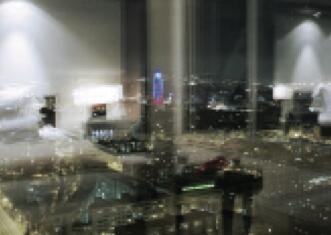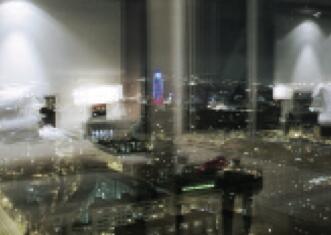Atopía: Art and City in the Twentieth Century
Centro de Cultura Contemporánea, Barcelona
Rooted in different intellectual fields contemporary philosophy, computer science, or cultural studies the exhibition “Atopia: Art and City in the Twentieth Century” is a response to a series of anguishing symptoms of the city in the culture of world globalization. “Can one live after Auschwitz?”, Adorno wonders. In the same way, the curators of this show seem to have based their investigation on the question: “what is left after the fragmentation of postmodernism?” What is innovative about the title, Atopia, is that it does not try to establish a new aesthetic or historical paradigm, but rather, to point to a common route characterized by the convergence of the margins towards the centers of globalization. It would therefore be convenient to view “atopia” not so much as a station but as a concept that delimits a boundary, or at least leads to the boundaries of the uncertain. From the Fall of the Berlin Wall to the Wall Street Crash, we traverse Atopia’s visual map: the transformation of the city into a new space for resistance. In the urban spleen of Hicham Benohoud or Erwin Olaf, there appear beings that seem to inhabit abysmal places. Thus the post-capital city (decentralized, its residents always adrift), appears under the sign of dis- comfort and anxiety, confusion and nakedness, sickness and schizophrenia. In the works of artists such as Carey Young or Nuno Cera, the apotheosis of the city and the end of the citi- zen converge: in the case of the former, the citizen has fallen to the ground; in the case of the latter, heights foster reverie. The figure of the “insane citizen”, as Duchesne Winter has called it, reappears once and again wandering along desolate ruins in the works of anothermountainman and Carlos Garaicoa, in Enrique Marty’s sculptures of urban wastes, or in the men col- lapsing from fatigue in Carey Young’s photographs.

Thus, the exhibition may also be toured as if it were a script of the Western imaginary on its current “apocalipstick”, in the words of Carlos Monsiváis. Featuring 41 artists and structured in four chapters with several transitional phases -The city versus the inhabitant, The city without the inhabitant, The inhabitant without the city, and Urban apotheosis – it leads the visitor along a path which, like a DJ’s nocturnal mixing, always goes back to the dislocation in the urban space. And so we enter the desert of post-human images in the works of Sergio Belinchón. Through David Harvey’s question, “Who has the right to the city?”[1], we may catch a glimpse of the urban space as the central nucleus on which to base a social transformation at the end of Post- Modernism. The culture of the streets, which draws on the world of graffiti rather than on urban guerrilla struggle, as evidenced in the work of Pedro Vizcaino or David La Chapelle, appears as another viable possibility for the coming community.
Atopia does not really aim at theorizing on the tense future between the city and its inhabitants; it rather intends to demonstrate how, after the various deaths of twentieth century utopias, the battle about life remains at the core of depolitiza- tion in our days. The integration of politics and the communi- ty in human life becomes even more visible from the perspec- tive of art as a possible model to combat and participate in policies in which we have no intervention at present.
[1] Nota: Harvey, David. “The Right to the City”. International Journal of Urban and Regional Research, 2003.




